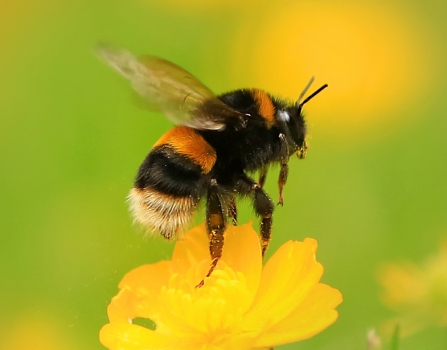Our top tips below should give you a helping hand to identify five of the most common bumblebees you might see this spring.
White-tailed bumblebee
The white-tailed bumblebee is a very common bumblebee that emerges early in the spring and can be seen right through to the autumn. It can be found in gardens, farmland, woodland edges, hedgerows and heathland: anywhere there are flowers to feed on. As the name suggests, it has a white tail as well as a yellow band on the thorax and on the abdomen. The markings are similar to other species, such as the buff-tailed bumblebee, so look for their bright white tail.
Tree bumblebee
The tree bumblebee is a relatively new arrival to the UK. First recorded here in 2001, it is slowly spreading north throughout the country. It nests in cavities such as bird nest holes in trees, bird boxes and roof spaces. The tree bumblebee visits a wide range of flowers, particularly those of soft fruits such as raspberries and bramble, and shrubs. Tree bumblebees have a distinctive appearance with brown/orange hairs on the thorax, a black abdomen and white tail.


